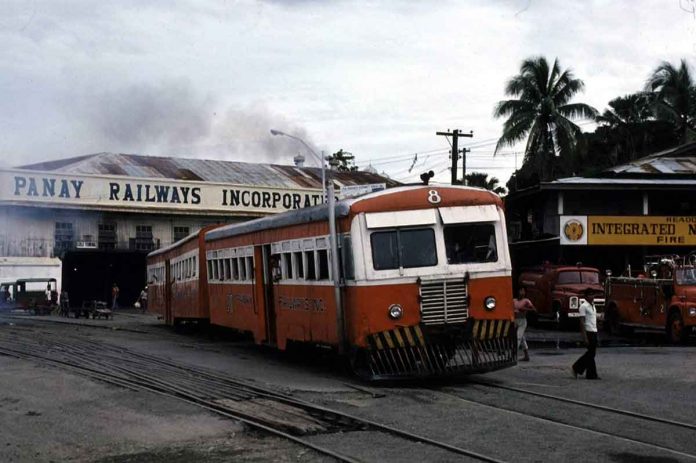
ILOILO City – The Department of Transportation (DOTr) has secured funding for a feasibility study on the proposed revival of Panay Island’s railway system.
Transportation Secretary Jaime J. Bautista disclosed over $6 million in loans to fund feasibility studies for three railway projects outside the National Capital Region – Panay railway, Bataan railway and North Long Haul interregional railway.
“We are happy with this pronouncement of our DOTr secretary,” said Cesar Capellan, chief operations officer of the state-owned Panay Railways, Inc. (PRI).

Citing the initial information he got, Capellan told Panay News on Feb. 3 that the DOTr has started the process of bidding for interested companies.
In his remarks on Jan. 9 during the launching of Metro Manila Subway Project’s tunnel boring machine in Valenzuela City, Bautista said, “I am pleased to announce that following the directive of the President in July last year, the Department of Transportation has already secured over $6 million to fund the feasibility studies for the development of the Panay railway, Bataan railway and the North Long Haul interregional railway which will connect Ilocos and Cagayan with the National Capital Region.”
“The technical studies for these railways will commence in the next few months,” the Transportation chief added.
In the feasibility study, the estimated budget for the Panay railway system revival will be determined, as well as the project’s timeline, the scope of work, project benefits for the public, and whether interested investors are willing to push through, among others.
“‘Pag nag-submit na sila ng feasibility study, may basis na tayo. Malalaman na natin kung ano scope of work at kung magkano ang budget na kailanganin,” said Capellan.
Last week, representatives from Kalyon Insaat Sanayi Ve Ticaret A.S. (Kalyon) of Istanbul, Turkey paid a visit to the DOTr office.
Kalyon is interested in undertaking a feasibility study in cooperation with the PRI. It is also interested in real estate development for settlers that would be affected by the railway’s revival.
Capellan is hopeful that the feasibility study will be conducted as soon as possible to have it reviewed by the National Economic and Development Authority (NEDA) Region 6.
Once approved, Kalyon’s proposal would be subjected to a Swiss challenge.
A Swiss challenge is a form of public procurement that requires a public authority that has received an unsolicited bid for a public project or for services to be provided to the government to publish the bid and invite third parties to match or better it.
Eleven investors – from Turkey, the United States, Saudi Arabia, Japan, England, and China – have expressed interest in the revival of Panay Island’s railway system.
To recall, Capellan said the project would most likely be done through the public-private partnership (PPP) – build-operate-and-transfer (BOT) scheme.
Under the BOT scheme, the investor will be given 25 to 50 years to operate the railways.
The contractor undertakes the construction and maintenance. It shall operate the facility over a fixed term during which it is allowed to charge facility users appropriate charges sufficient to enable the contractor to recover its investment, plus a reasonable rate of return thereon.
Capellan said the revival of Panay railways would need an estimated US$1.5 billion just for Phase 1 which covers the 117 kilometers of railway tracks from Iloilo City to Roxas City.
“Phase 1 includes civil works, locomotives, human resources, and relocations, among others,” said Capellan.
Panay railway’s original route was 117 kilometers long and included 19 permanent and 10 flag stations. It connected the then-towns of La Paz and Jaro (now districts of Iloilo City); Pavia, Santa Barbara, New Lucena, Pototan, Dingle, Dueñas, and Passi City in Iloilo; and Dumarao, Dao, Panitan, Cuartero, and Loctugan in Capiz. It reached Roxas City.
Capellan said the revived railway system will have an expanded area of coverage. Phase 2 will see the construction of new railway routes from Roxas City to Kalibo, Aklan, going to Caticlan in Malay, Aklan.
Phase 3 will cover the new railway route from Caticlan, Malay, Aklan to San Jose, Antique; and Phase 4 will cover the new route from San Jose, Antique to Iloilo City via Iloilo province’s San Joaquin and Miag-ao towns.
In July last year, President Ferdinand Marcos Jr. announced in his first State of the Nation Address he wanted to revive the railway systems in the country.
The Panay railways started operating in 1907. In Iloilo City, its trains ended at the passenger terminal along the wharf next to the Customs House and near where the current Iloilo City Hall stands. Trains ran across what is now the Drilon Bridge from La Paz and down the banks of the Iloilo River to Muelle Loney at the Port of Iloilo.
However, operations ceased in 1983 due to mounting losses./PN





